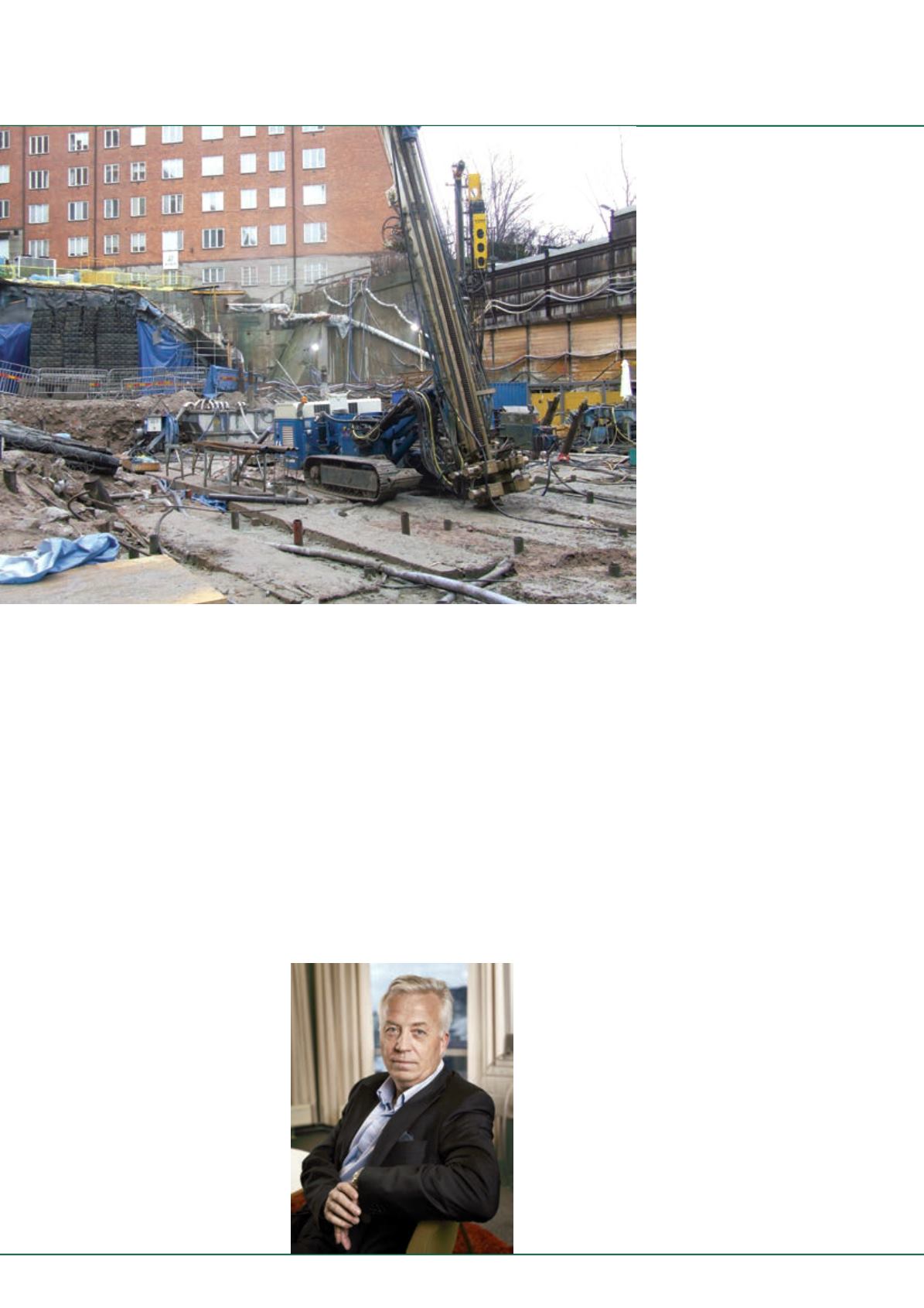
international
construction
september 2014
REGIONALREPORT
22
Light at the end of the tunnel
includes the high-speed rail link from Stockholm toLinkoping,
among others.
Inaddition,work isunderwayon theStockholmmetro.A6km
commuter rail tunnel is beingbuilt beneath central Stockholm–
the € 1.7 billion (US$ 2.3 billion) Citybanan project.
Weakness remains
In contrast to the strength in the UK, Sweden and Norway,
all of which are outside the Euro Zone, things start to look a
little weaker within the more core European countries, and
particularly towards the South of the region.
In mid-Europe, there are signs that construction growth in
Germany is slowing, even though Europe’s biggest market led
the way out of recession a few years ago and had one of the
region’s bolder national stimulus plans in the crisis years.
Things look even worse in France, where Euroconstruct
says a construction recession has returned, following some
encouraging signs in2011.The organisation says itwill be 2016
before the French construction sector grows again.
France’s economic stagnation provoked
a major schism in the government in
August, with prime minister Manuel
Valls firing almost his entire cabinet
for disagreeing with president François
Hollande’s austerity policies.
The theme of austerity in Europe,
championed by German chancellor
AngelaMerkel, is one that has alsodrawn
criticism from the construction industry.
FIEC vice president Jacques Huilllard
said, “There can be no growth without
investment.The policyof austeritywhich
has been in favour for the last few years
has done enormous damage both to
the real economy in general and to the
construction sector in particular.”
It is certainly true that austerity
measures have bitten into public
construction. FIEC’s figures show that
infrastructure construction was down
-3.7% in Europe last year, while the
value of construction in the public non-
residential segment fell -5.5%. It was
only amore buoyant housing sector that
limited thedecline inoverall construction
output last year to -2.3%.
Undoubtedly the countries that have
suffered the most since the crisis years
have been the Southern peripheral
economies such as Greece, Italy, Spain
andPortugal.
Spain was once considered one of
the ‘Big 5’ construction markets along
with France, Germany, Italy and the
UK. However, six years of double digit
declines have seen construction output
fall to € 65 billion (US$ 86 billion)
last year, according to Euroconstruct,
compared to a pre-crisis high of almost
€ 220 billion (US$ 290 billion) – the
country’s construction market is worth
just 30% of what it was seven years ago.
Having said that, Spain seems to have reached the bottom,
and is showing signs of recovery, and that is stimulating
business. For example, Valero Serentill, regional sales manager
for equipment auction company Ritchie Bros said, “When you
open a newspaper or read the news online, you see signs of
recovery in Spain. The banks report fewer bad loans, GDP is
expected to grow slightly, the tourism industry is still expanding
and government stimulus-packages are rolled out to boost the
industry.”
He said another reason for hope was the changes beingmade
to businessmodels in construction companies.
He added, “Before you can look to the future, youhave to look
closer at thepresent.An important and real change is thatpeople
are getting a grip on the reality of themarket. Step by step you
seebig and small constructionbusinesses all over Spain adapting
their businessmodel to the new needs and opportunities of the
market.”
Figures from Euroconstruct forecast a return to moderate
growth for the Spanish construction market in 2015, with a
similar improvement expected for Italy andPortugal.
But forecasting is of course a dangerous business, and the
circumstances that can change construction’s outlook are
sometimes unexpected and can come around more frequently
than the annual cycle of industry updates.
The European Commission’s statistical service, Eurostat
providesmonthly data, and since the secondquarter of the year,
there has been some suggestion that European construction
growth could be reversing, or even stagnating. Worsening
relations with Russia, insurgency in theMiddle East and other
global concerns are all having an impact on Europe’s weak
economic growth.
As construction output tends to go up and down with the
general economic cycle, there is a concern that even though
these factors are well-removed from the industry itself, they
could be enough to delay the recovery.
iC
Stockholm’s Citibanan project.
Veidekke and
FIEC’s Kjetil
Tonning says of
Norway, “You
knowwhat you
can expect even
if you change the
government.”


